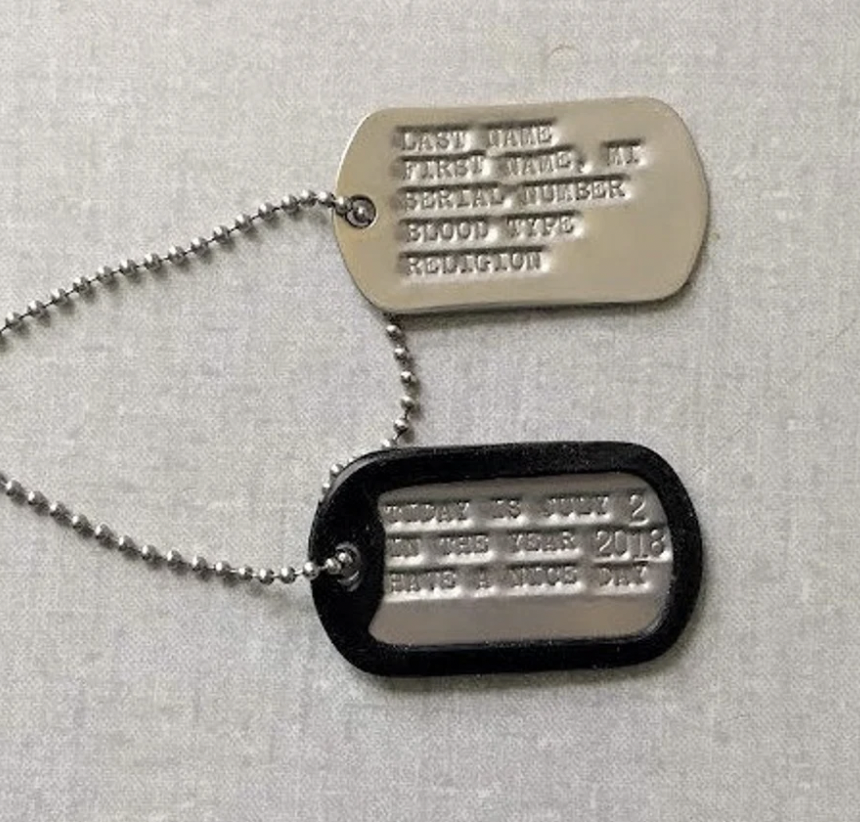

The Dog Tag Maker
Addressograph Graphotype 6381 Metal Embosser
The history behind military identification tags, commonly known as “dog tags,” originated during the Civil War. The carnage was so great and bodies were so disfigured that they sometimes could not be identified – 42 percent of the Civil War dead remain unidentified. As a result, it became a practice for soldiers on both sides to pin a handkerchief or piece of paper with their names and addresses to their uniforms just before battle. Some troops fashioned their own identification tags out of pieces of wood, boring a hole in one end so that they could be worn on a string around the neck.
The commercial sector saw the demand for an identification method and provided products. Harper’s Weekly Magazine advertised “Soldier’s Pins” which could be mail ordered. Made of silver or gold, these pins were inscribed with an individual’s name and unit designation. Private vendors who followed troops also offered ornate identification disks for sale just prior to battles.
Later on, the metal dog tag was developed for the United States armed forces.
The first official advocacy of issuing identification tags took place in 1899. U.S. Army Chaplain Charles C. Pierce, who was tasked to establish the Quartermaster Office of Identification in the Philippines, recommended inclusion of an “identity disc” in the combat field kit as the answer to the need for standard identification. U.S. Army Regulations of 1913 made identification tags mandatory, and by 1917 with the entry of American forces into World War I, combat soldiers wore aluminum discs on chains around their necks. The oblong shape familiar to us was adopted just prior to World War II and became better known as “dog tags.”
In the Navy, dog tags go back to World War I. They were first prescribed by Secretary of the Navy Josephus Daniels in General Order No. 294 of 12 May 1917. These first tags were oval and perforated at one end – a single tag to be worn around the neck. One side of the tag bore an etched print of the right index finger. The other side was stamped “U.S.N.” and etched with the individual’s personal information.
As World War II went on, use of a second tag, individually suspended by a short length of chain so that one tag could be removed “on death or capture, leaving the other in place.” Markings consisted of name; officer file number, or enlisted service number; blood type; date of tetanus inoculation; service; and religion, if desired by the service member. When a service member was buried, ashore or at sea, one tag was to be left with the body and the other sent to Navy headquarters.
Post-World War II tags were worn on a bead chain, with attached short loop for the second tag. They bore name (surname, followed by initials); service number; service; blood type; and religion, if desired by the individual.
Although the Department of Defense is testing a new plastic identification tag embedded with a computer chip holding encrypted medical and personal information, the standard metal dog tag is still worn by American forces today.
Sources: U.S. Navy Naval Historical Center, U.S. Army Quartermaster School
